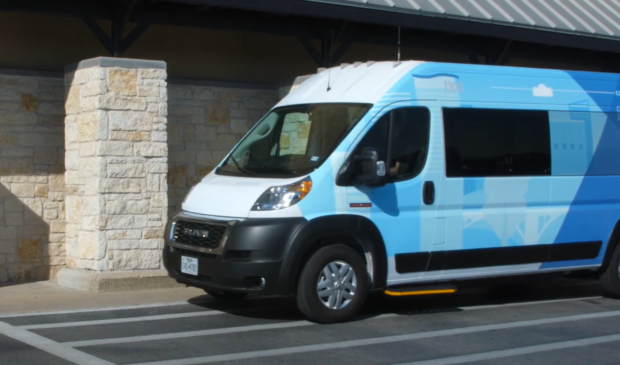Covid-19 informs Pickup service model
Tuesday, September 29, 2020 by
Ryan Thornton The on-demand, app-based transportation service Pickup has become an increasingly central piece of Capital Metropolitan Transportation Authority’s service network in recent years, beginning with a pilot in 2017 and expanding into seven neighborhoods today. As the program expands into new areas over the coming years, Capital Metro plans to prioritize the service for low-income and minority communities that most depend on public transportation to meet their daily needs.
As Capital Metro worked to modify its service and operations in response to the Covid-19 pandemic, Sharmila Mukherjee, executive vice president of planning and development, said the agency began to understand where most essential trips were taking place and which destinations were generating the most transit journeys.
Mukherjee told the Capital Metro board Monday that the pandemic has emphasized the need to provide better connectivity to essential places like affordable housing, grocery stores, major retailers and medical providers. With the renewed awareness, Capital Metro is now considering these essential places to fill transit service gaps and expand the Pickup service program. The agency has identified three areas – North Dessau, North Oak Hill and South Menchaca – that will likely become new service zones if voters approve Project Connect under Proposition A on Nov. 3.
All three areas are near the edges of the existing transit network and lack well-connected street grids that are essential to fixed-route transit service. Each of the zones also contains a mix of essential places such as affordable housing, government offices, schools or grocery stores. Among the three zones, North Dessau has the highest population and residential density, with nearly 27,000 residents at over 11 individuals per acre.
“I think that it is really significant that we’re focusing on that North Dessau area … because there is a huge population moving up there and a lot of it is less affluent,” Commissioner Jeff Travillion said Monday.
When Austin residents decide the fate of Project Connect in November, they will not only approve or reject large transit investments like two light rail lines, a downtown tunnel, a second commuter rail line and three MetroRapid bus routes, but also smaller investments like a total of 15 new on-demand neighborhood circulator zones. If the plan is approved, Capital Metro intends to have the three new service zones running sometime in winter 2021.
Capital Metro is also studying a Southeast Austin zone, likely somewhere in the vicinity of Del Valle. Chad Ballentine, vice president of demand response and innovative mobility, said there is not yet a proposed zone, but that the agency is talking with Travis County to create a service boundary that makes sense for the rapidly developing diverse community.
“We’ve got a major auto manufacturer coming in, we have a lot of housing that is there, but even more is going to be showing up so coordinating that and coordinating the growth out there is going to be huge,” Ballentine said. “And I think the county 100 percent understands the stakes and how high they are.”
Today, Pickup is available in portions of Manor, Leander, Lago Vista, East Austin, Northeast Austin, Exposition and Walnut Creek. By March 2021, Capital Metro aims to have a total of 10 neighborhood circulator zones.
“As we can fine-tune it, I think we will see a great reimagining,” Chair Wade Cooper said. He added that once bicycle services and other last-mile solutions are connected, “we really are living up to our title of transportation authority and not just bus company.”
In addition to the new focus on essential trips, essential places and equity, Board Member Eric Stratton expressed interest in using the service to help increase transit use and connect residents to Park & Ride facilities in parts of West Austin.
“What I love about this conversation is that we’re talking about areas that we have not historically serviced or serviced very well,” Stratton said. “I want to flip the map a little bit and look over onto the west side. I realize that socioeconomically the demographics are different, but the service is still an issue.”
Ballentine said Pickup could potentially be part of a solution for areas like Four Points, where a new Park & Ride would be constructed if Project Connect is approved.
“Equity is a huge piece – it’s a huge problem and a huge thing that we’re trying to solve with this tool, but we can also do a lot of other things with this tool, so it’s really flexible,” Ballentine said.
The Austin Monitor’s work is made possible by donations from the community. Though our reporting covers donors from time to time, we are careful to keep business and editorial efforts separate while maintaining transparency. A complete list of donors is available here, and our code of ethics is explained here.
You're a community leader
And we’re honored you look to us for serious, in-depth news. You know a strong community needs local and dedicated watchdog reporting. We’re here for you and that won’t change. Now will you take the powerful next step and support our nonprofit news organization?








